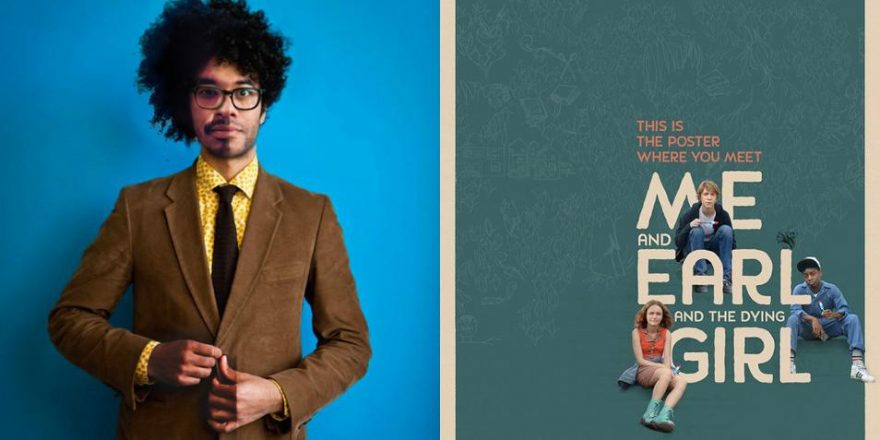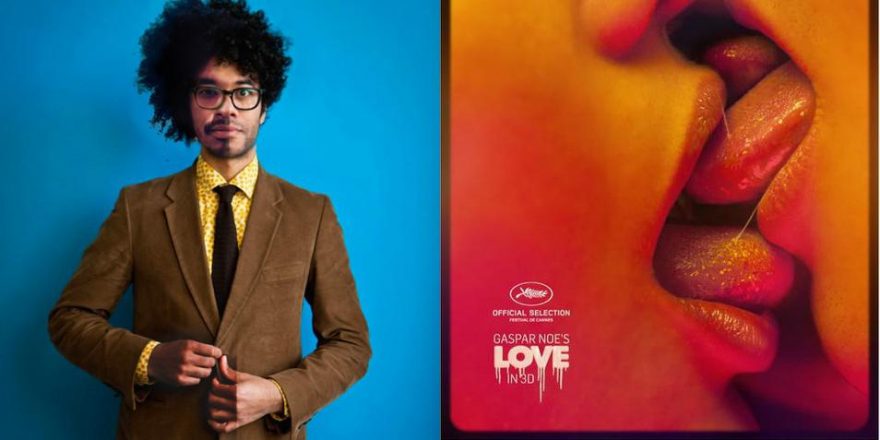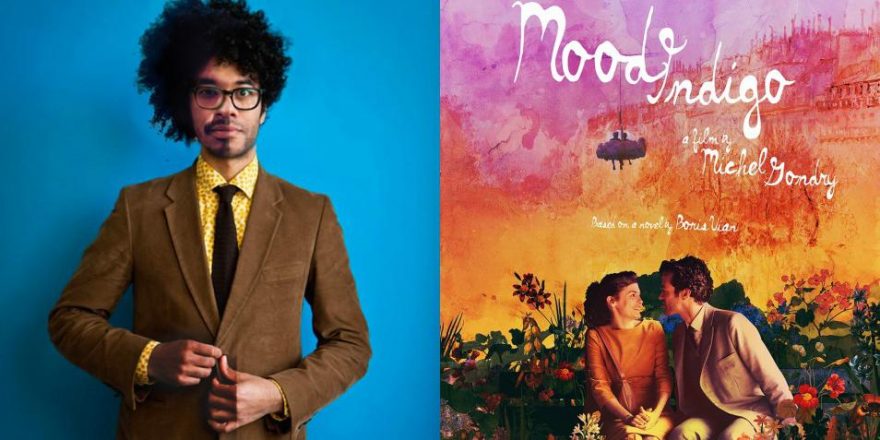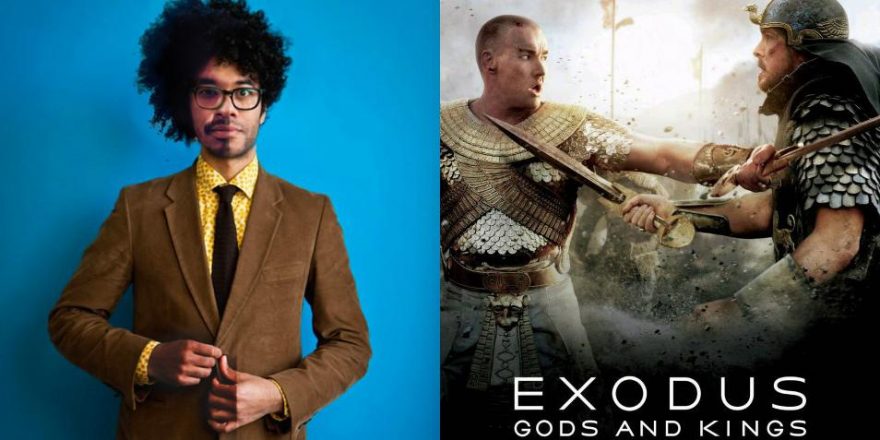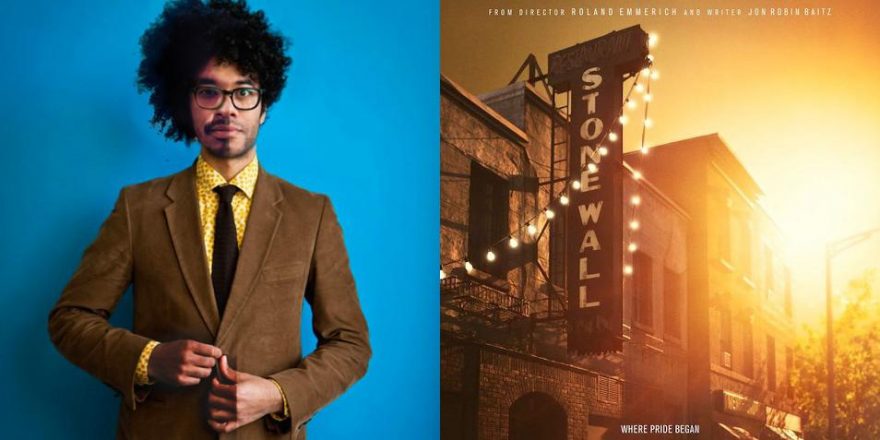Over the holiday break, Talkhouse Film is running some favorite pieces from 2015, as chosen by its contributors. Check back in the new year for the Talkhouse Film’s Top Films of 2015 and the full results of the site’s end-of-year poll. — N.D.
I like vanilla ice cream. Well, I guess I used to like vanilla ice cream. The truth is, I haven’t had it in a while. I remember eating it in my early childhood as, like, an entry point to the idea of ice cream. I quickly moved on to strawberry, but that only held my attention for a year, maybe. Then someone took pity on me and my narrow worldview and introduced me to the heaven that is Cookies ‘n Cream. I’m from Texas so we have Blue Bell, and they definitely sprinkled nicotine powder in their pints of Cookies ‘n Cream.
I was hooked on that until my twenties, at which point two circumstances changed my life forever. First, I moved away from Texas to the Northeast, where at the time there was no Blue Bell available; and second, I aged out of my ability to digest lactose and had to remove dairy from my life completely.
These hardships were a blessing in disguise, as they prompted me to explore the myriad of options becoming available in the wide world of frozen desserts. My changing circumstances coincided with a brave new culinary world in regards to the idea of ice cream. Non-Europeans the world over were refusing to assault their digestive systems with lactose, and we demanded innovations in our ice cream so that we could continue to enjoy the most amazing dessert this side of vegan carrot cake.
Soy-based ice cream dropped, rice-based ice cream, non-dairy sorbet. I caught up around the time that coconut milk ice cream came into popularity, and I fell in love with what may be the most innovative and delicious ice cream ever created: coconut milk double chocolate brownie fudge almond ice cream, the be-all and end-all of frozen desserts, the way, the truth and the life, the destroyer and the creator, they for whom everything that follows is changed.
Jazzy, weird, gourmet ice cream is now the norm. After Ben & Jerry’s sold out and got out of the game of grassroots ice cream flavor innovation, an innumerable amount of small-town, hipster, bespoke, gourmet creameries have picked up the baton and run with it. Vanilla started it all, but rarely if ever do I see anyone getting excited about its presence on the menus of these establishments.
So given the current landscape, I would never eat vanilla ice cream on its own. That said, if it’s artisanal in nature and maybe using some sort of exotic Tahitian vanilla beans and put on top of my grandmother’s peach cobbler, I’d mess with it as a sort of pairing that would enhance the textural experience of the cobbler. Unfortunately, as I mentioned before, I have aged out of my ability to digest lactose, so the vanilla ice cream would make me sick.
This movie is maaaaaaad vanilla.
It’s not quite store-bought, Costco, knock-off Breyer’s brand, bulk vanilla, but it is no doubt normal, fair-to-middling quality, Häagen-Dazs plain vanilla. (Häagen-Dazs, it should be noted, is not a German or Dutch artisanal ice cream made from any ancient recipe developed in 11th-century Bavaria with milk culled from cows who grazed the Prussian mountains. Häagen-Dazs is just a Dutch-sounding brand name created by Reuben and Rose Mattus in the Bronx; it’s the same old all-American Vanilla. A very boring cocker spaniel in Andalusian sheep’s clothes.)
There is almost nothing more to say other than the fact that this movie – while vaguely inspired in the way it’s photographed and staged – is so conceptually, narratively and tonally vanilla, so in lockstep with the clichés of the teen movie genre, that it may only be appropriate for long plane trips.
I struggle with my current responsibility, which is to “respond” to the film with well-reasoned observations and anecdotes. I ask myself, is it worth your time or my time to even explain why a movie about an angsty young white boy coming of age while caring for his dying friend is the cinematic equivalent of a store-bought glazed donut?
I have an anger problem. I was kinda angry while watching the movie. I was making Steve McQueen faces the whole time.
(I have since calmed down.) In case I buried the lede, let me restate. This is a good movie, like vanilla ice cream is good ice cream. It involves sugar, which everyone likes (but should consume moderately), it’s white, and yeah, that’s about it.
I think I was angry at the movie because of how it was marketed to me and how that marketing established expectations that the film did not meet. I’m usually a fan of subverted expectations, but they often go wrong. (Based on the trailer, who knew Avatar would be a white-savior movie?)
The credentialing of “best movie at Sundance” suggested that I was in for an experience unlike one I had seen before in, like, mainstream movies that naïve-scared-white-supremacist-misogynist-celebrity-driven movie studios produce every week. But instead, what I got was a million things I had seen 5,000,000 before times (mostly in the movie Rushmore, and John Hughes movies and every Michel Gondry movie).
Shit, am I doing it already? Am I expounding upon my expertly deployed dessert metaphors?
The rest of what I say will be a restating the obvious, so you truly needn’t read it. I think that as the type of person who often hurls their irrelevant opinion onto passing strangers, I am supposed to at least substantiate these opinions with facts and anecdotes and well-reasoned arguments and whatnot…
But really, just trust my metaphor – the movie is vanilla.
So, the following substantiations are only here for readers a thousand years in the future who are for some reason interested in this piece of writing past the casual “what should I see this weekend?” thing. It’s for you film studies students at University of Phoenix class of 3015 taking a class in the vapid dreamworlds and Catch-22s of 21st century white male centrality in film.
Why this movie is good but cliché and boring and vexing #1. This is a magical negro movie with a marginal, cliché black character that is disingenuously marketed as a three-hander (re: title). Never heard of a magical negro movie? It’s a movie with a supporting black character who talks in bumbly, folksy negro-speak for most of the time so that we can lower our expectations about what he has to offer our conflicted white male hero or anti-hero, and then just at the moment of levity, just when the white boy needs it, the magical negro says something magical and redemptive and learned or wise. Occasionally, he actually does something magical, like grab the white man’s balls and cure him of his erectile dysfunction and infertility with his sexy virile nigger magic (this actually happened in The Green Mile). So Earl – the only named character in the title of the movie – does just that, mumbling about “titties” for every line he has in the first half of the movie and then on two or three occasions in the latter half of the film tells it like it T-I-is about the dysfunction of “Me” – our focal point – the hapless white boy.
To make matters worse, whatever white boy wrote this black character piles on the stereotypes and imbues the character of Earl with all the idiosyncracies of young black masculinity he heard detailed on his favorite Ja Rule album. So, of course, Earl smokes Newports, has a brother with a pit bull, tats, and an “I start shit” attitude, has an absent father and a distant mother, can fight, is from “the wrong side of the tracks.” And, of course, Earl in his magical way doesn’t say much, but when he does say something, it is to lay the bricks for “Me’s” pathway to self-discovery by articulately opining about our lead’s emotional unavailability, his performed neuroticism, and his generally unhelpful self-loathing.
That said, this is vanilla ice cream, so there are redeeming qualities within the confines of this shitty, racist, lazy characterization. The kid playing Earl gives a spirited performance. He hits the dry-humor, deadpan beats slack-jawed and silly, but he is still able to pull off that “But I’m handsome tho” air that straight men in a comedy duo rarely execute. He also hits the dramatic beats with a strange solemnity and naturalism. I was taken with his performance even though I didn’t want to be. Like mid-2009 Kobe winning championships without Shaq.
Why this movie is good but cliché and boring and vexing #2 This is a middle-of-the-road high-school movie that offers literally nothing new in the ever-expanding young adult genre: It’s got it all. The single mother alcoholic who comes on to underage boys, glass of wine always in hand. The montage in which our lead character breaks down the complex social dynamics of high school (that scene is more overused than the “let’s get a Black guy to teach the white guy how to dance” scene). The “my heart is palpitating because the hot girl is getting close to me and I lack social graces” scene. And, of course, the redemptive “Yes, that same hot girl asks Me to go to the prom” scene. There is a moment in which it seemed like it was possible that the Wayans brothers wrote this movie as a part of their parody franchise (Scary Movie, etc.) but then gave the script to Wes Anderson and Michel Gondry to direct. (More on that later.)
Why this movie is good but cliché and boring and vexing #3 It overtly panders to feminists in the actual dialogue of the film, like in the actual shit that comes out of the characters’ mouths. There are several moments in which the main character literally says, “Me and this girl do not have a sexual relationship, she is just my friend – period – and this story is not about that.” (Or something like that.) We get it, you are not sexualizing the female lead! You are not allowed to pat yourself on the back for that during the actual movie. It’s soooo Captain Obvious and is just shy of literally having the lead character look directly at the audience – Frank Underwood-style – and say, “I’m not sexist and see women as human beings not sexual objects because they are human beings. Fuck yeah. Feminism.”
This shit infuriates me because it so violently misses the point. The movie still marginalizes “the dying girl.” She isn’t on screen for, like, half the movie. She is absent for so long that during her first emotional blow-up after losing her hair from chemo, I had trouble conjuring up the empathy that was obviously being solicited from me because I hadn’t spent any time with her. The truly feminist statement would have been to centralize her life; her plight is clearly more dire and interesting. The most dangerous and persistent legacy of a patriarchal and misogynist society is the assumed centrality of the male and the male experience, and this film participates in that patriarchy just like all the other shit that came before it, because given the choice to focus on “Me,” Earl, or the Dying Girl, it assumes that Me (the white man) is central. At the end of the day, the dying girl, like Earl before her, is a prop, a kind of rung on the step ladder to the central character’s self-discovery and ability to get into a fairly meh college.
Now don’t get me wrong, there are many great movies with white guys at the center of their universe. Rushmore is a great example, and so is almost every movie you have ever seen that you liked. But none of those movies are self-righteous enough to claim that they are doing something they aren’t, which is in any way advocating for or promoting equality between the sexes – patting themselves on the back right between the rising action and the climax.
Why this movie is good but cliché and boring and vexing #4 What is that thing they always criticize about Tarantino movies? That he is too referential? I don’t think that’s the word, but people always say that he just appropriates other directors’ styles verbatim and kind of mixes things up, like the Prince Paul of cinema, into this postmodern/sample-based way that we now dub Tarantino-esque. So maybe that is what is happening here, but to my eyes and ears: Wes Anderson should sue, and so should Michel Gondry. I won’t even really talk about the fact that his film’s whole concept is a direct plagiarization of Be Kind Rewind, Rushmore, and a little bit of Ayoade’s Andersonian sendup, Submarine.
This movie is directed by, like….
OK. You know the movie Invasion of the Body Snatchers. So let’s say that happens in real life and humans are possessed by alien souls so all your friends look like themselves and talk like themselves but aren’t themselves.
Now imagine if Wes Anderson and Michel Gondry were lovers in the future and had a son… a boy. Now let’s say this boy grows up and becomes a pretty great filmmaker who is extremely influenced by his fathers… He cannot get out of their long shadows and masterfully rehashes their styles in his films.
Now let’s say the body snatcher aliens invade earth and Mr. Anderson-Gondry has his body snatched and inhabited by those aliens.
This movie is directed by the body-snatched son of Michel Gondry and Wes Anderson. That said, this guys knows what he’s doing, he just doesn’t have his own identity and his imagination has drifted away along with any original thought that existed before his body got snatched. And, of course, when he goes to get ice cream, he orders vanilla.



